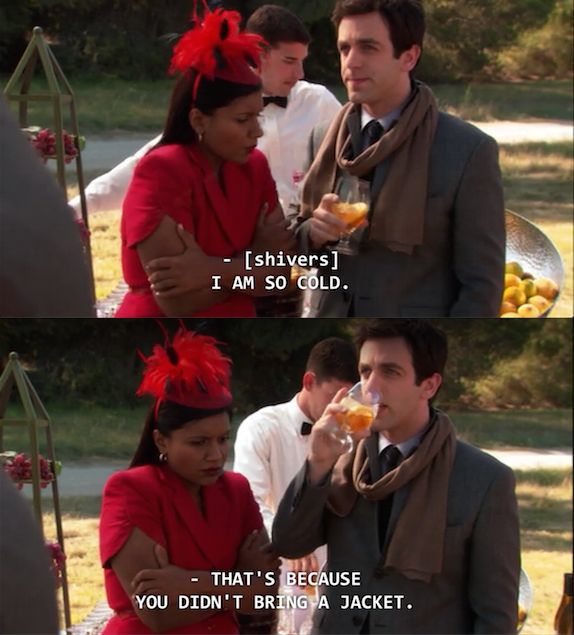When temperatures drop in the winter, every conversation inevitably begins with the weather. “It’s cold out.”
My default response to this is some flavor of “you’ve never experienced real cold”1. At first, this response seems like harmless banter. But, I had a realization as I was playing a recent round of replay-the-conversation-in-your-head-while-taking-a-shower. My default response suuuuucks.
Rule for good conversation: Accept the premise.
A conversation is a bit like improv (an improv-ersation2 if you will). The proverbial #1 rule of improv is “always accept the premise”. Imagine for a second that you are in an improv sketch. You are given the impossible task of constructing an entire world out of nothing but your imagination. You have to speak the world into existence. As you partake in the rapid-fire conversational cadence of improv, each participant brings their own unique contribution.. And with each contribution, it’s vitally important that they build on top of one another. Doing anything less (building on the side, deconstructing what was built, building with different blocks) can throw off the rhythm and creativity of your counterpart.
A classic mnemonic for remembering this rule is to start every response with “Yes. And…”. “Yes. And…” responses ensure you continue the thread of the story from one sentence to the next - painting a scene together with your partners. These type of responses also provide optionality. They allow each person to evolve the story in whichever direction is required.
Contrast this open and shared world-building with what it looks like to violate the #1 rule. What happens if you don’t accept the premise? Usually this means that rather than beginning your responses with “Yes. And…”, you begin with “No. Because…”. This type of response adds friction to the conversation. Instead of building a world together, “No. Because…” responses cause you to move backwards. You have to move backwards to retract and rehash something your partner has just tried to create. “No. Because…” responses are a subtle attempt to steal creative control of the story. “No. Because…” responses are about you. You want the story to be about what you want.
Conversations work the same way. Accepting3 the premise preserves the thread of conversation. The flow of good conversation happens when one statement flows from the next with as little friction as possible. Nobody is trying to wrestle creative control. But rather, you are joining forces with your conversational dance partner to create something unique at the intersection of both of your minds.
This does feel a bit tacky to analyze the opening lines of a conversation4 like this. “It’s cold out” is in the same category of conversation starters as “How was your day?”. Conversational starters that are so common that they almost carry no meaning. They’re more protocol than an invitation to dialogue. But at the same time, I have no doubt of the broader lesson around accepting the premise. I’m certain my conversational skills would improve dramatically if I stop using the first words out of my mouth to invalidate the premise.
I’ll have to come up with a better default response for “it’s cold out”. Although, I will always keep the smart-alec retort in my back-pocket, reserved for close friends and family.

living a few years in Fargo, ND will do that for you – you develop a superiority complex towards all things cold. ↩︎
the original improversation.
↩︎Accepting != Agreeing. The distinction is important. ↩︎
this phrasing makes me think of an opening book in chess. literally a collection of opening moves, counter-moves and counter-counter-moves to set yourself up in the best position for the remainder of the game. the best chess players are often those with the largest opening books…someone should make such a book for conversation starters. ↩︎